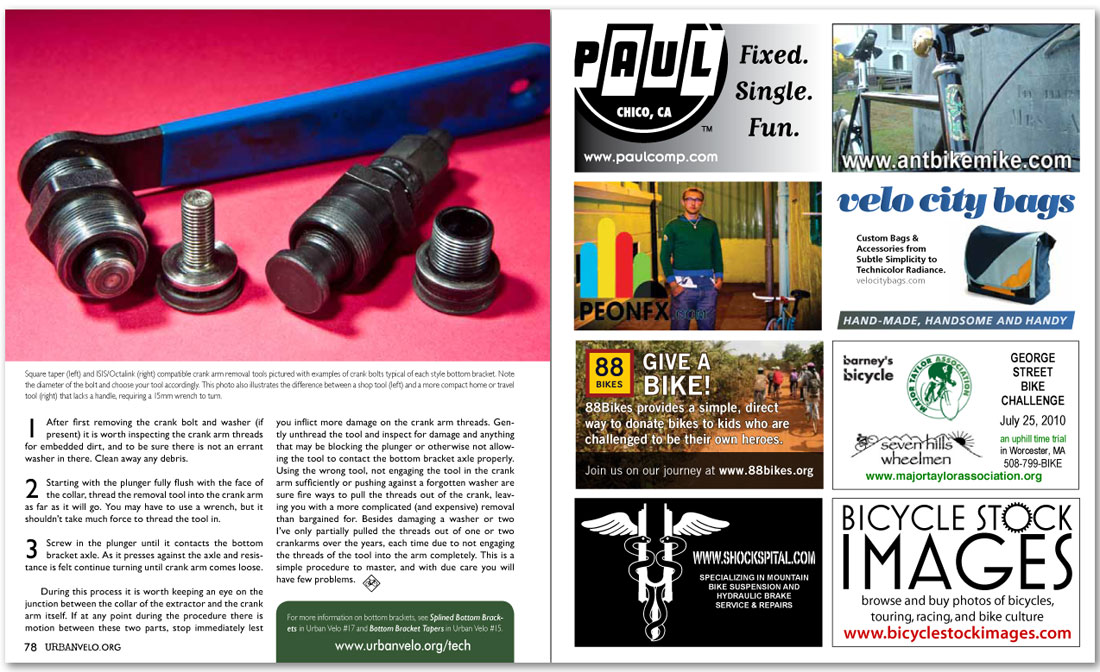


1 After first removing the crank bolt and washer (if present) it is worth inspecting the crank arm threads for embedded dirt, and to be sure there is not an errant washer in there. Clean away any debris.
2 Starting with the plunger fully flush with the face of the collar, thread the removal tool into the crank arm as far as it will go. You may have to use a wrench, but it shouldn’t take much force to thread the tool in.
3 Screw in the plunger until it contacts the bottom bracket axle. As it presses against the axle and resistance is felt continue turning until crank arm comes loose.
During this process it is worth keeping an eye on the junction between the collar of the extractor and the crank arm itself. If at any point during the procedure there is motion between these two parts, stop immediately lest you inflict more damage on the crank arm threads. Gently unthread the tool and inspect for damage and anything that may be blocking the plunger or otherwise not allowing the tool to contact the bottom bracket axle properly. Using the wrong tool, not engaging the tool in the crank arm sufficiently or pushing against a forgotten washer are sure fire ways to pull the threads out of the crank, leaving you with a more complicated (and expensive) removal than bargained for. Besides damaging a washer or two I’ve only partially pulled the threads out of one or two crankarms over the years, each time due to not engaging the threads of the tool into the arm completely. This is a simple procedure to master, and with due care you will have few problems.
For more information on bottom brackets, see Splined Bottom Brackets in Urban Velo #17 and Bottom Bracket Tapers in Urban Velo #15 or visit www.urbanvelo.org/tech.